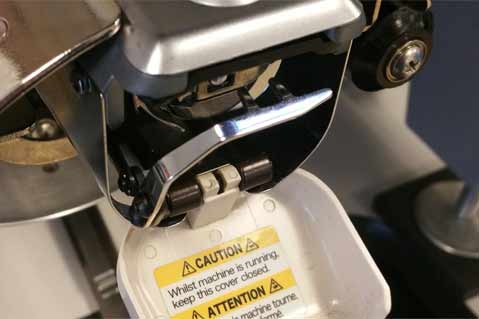May 04, 2017
Q&A: Understanding the Embroidery Machine Picker
Your embroidery machine’s picker works with the trimmer and upper thread catcher to control thread tail lengths.

We spoke with Bill Garvin, owner of embroidery machine repair company BG Tech Services, about the embroidery machine picker. Here's an in-depth look at what it is, why it's important and, most importantly, how to keep it in good working order.
Q: What exactly is the embroidery machine picker, and what is its function?
 Bill Garvin: The picker has nothing to do with sewing. It’s is part of the starting and stopping feature on your machine and works in conjunction with the trimmer and upper thread catcher. Its main purpose is to control the tail lengths on your machine. It also assists with starting.
Bill Garvin: The picker has nothing to do with sewing. It’s is part of the starting and stopping feature on your machine and works in conjunction with the trimmer and upper thread catcher. Its main purpose is to control the tail lengths on your machine. It also assists with starting.
Q: What kind of issues will you have if your picker is damaged or malfunctioning?
BG: The most common issue people find when the picker doesn’t work properly is that your machine will have issues starting, because the top thread isn’t connecting with the bobbin on startup or after a trim. Keep in mind that the sensor on the machine will just say it’s a thread break, but it’s not a thread break in this case.
Q: How do you test the picker to see if it’s working properly?
BG: To manually check the picker, push it in by hand, and release. It should spring back out on its own, and never stay stuck in around the bobbin case. If it does, the thread just keeps wrapping and creates a bird’s nest. Also, simply pressing the trim function on the machine will test it electronically: You will see it fire in and come back out. The solenoid that fires the picker is normally a low DC voltage. Most are 24 volts, that engages the picker – pulls it in – and then when it de-energizes, a spring pushes it back out.
Q: Can you share troubleshooting tips for your picker?
BG: The normal position for most pickers when pushed in is center of the pigtail on the bobbin case, up and down as well as left and right. When pushed in, the picker will be parallel with the hook support bracket, located right above. One of the most common things to happen to the picker is for it to get bent and out of position. This is normally caused when large, bulky garments are taken off the machine too fast and catch on the picker, bending it. For the most part, you can bend the picker right back into place.
Q: What else should embroiderers know about their picker?
BG: The picker is controlled electronically, so almost all machines have a function in their settings to help control tail lengths. On some machines, you may see a setting simply for short, medium or long. Other machines use a number setting, like seven to 17, with higher numbers indicating a longer tail. If you set the tail too long, you’ll have some trimming to do, with threads sticking up. If you set it too short, you’ll get pullouts.
Keep in mind that the picker works with the trimmer and the upper thread catcher, so make sure to check these items as well, especially the Velcro bar, where thread is held until it’s ready to be used again. Sometimes this bar gets dinged or the Velcro needs to be replaced, making you think there’s a picker problem. There’s never one specific answer to any embroidery problem, but there’s always a solution if you know what to look for.
Watch This!